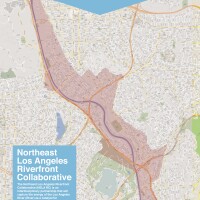Goal 8: Promote Sustainable Economic Development

Many cities across the country have reinvested in their rivers, reaping benefits that go well beyond economic returns. These projects have invigorated tourism, created a better quality of life for residents, and produced vibrant economies. A common set of tools, and the entities that leverage them, is essential to ensuring a comprehensive and sustainable local economic development strategy."The idea that someone in Sacramento is going to come down and announce our economic strategy is preposterous. There is no white horse coming to save the day. This is economic policy developed and informed at the local level. It's regions rising together", Lieutenant Governor Gavin Newsom recently stated in his keynote presentation at the 2013 California Economic Summit. This type of local level economic development policy is exactly the sort of undertaking necessary to build a sustainable Riverfront that creates values for communities, spurs private investment and builds critical infrastructure.
Many cities across the country have successfully reinvested in their rivers, reaping benefits that go well beyond economic returns. Los Angeles will not be an exception.
The goals and recommendations in this section aim to maximize underutilized areas and catalyze opportunity for housing, transportation, employment, and open space. This will require new and alternative tools to fund community programs and projects. Lessons from other cities that have revitalized their riverfronts show that change require both public and private investment and initiative. The following objectives aim to realize the economic development potential of NELA.

Objectives:
A. In order to establish the framework and leadership necessary to guide the economic development of the NELA neighborhoods, a comprehensive approach on financing mechanisms is needed. To maximize the benefits for the community, we cannot rest on an assumption that the mere presence of the LA River will accomplish the entire task organically.
Examples of some tools that could help initiate economic development include leasing of public or private property, issuance of tax-exempt bonds, taking on long-term debt, and other financing vehicles that may requires a separate legal entity, new or existing, to properly execute financial transactions.
B. A fundamental pillar of sustainable economic development is building a physical and civic infrastructure with the capacity to handle both today's demands and the needs of planned future developments. The public works, civic constituent services, roadway capacity, public transit, and other agency-owned components of the built environment need to be upgraded to handle existing burdens and expanded to attract economic development.
A minimum level of public infrastructure is necessary to accommodate the needs of offices, tech campuses, tourist attractions, local and tourist-serving businesses, destination entertainment, mixed-use projects, and walkable public spaces. In order to increase the capacity for the private sector, the public sector must also plan for its own physical and civic expansion
C. Real estate development is a central strategic initiative for any sustainable local economic development program. In the absence of meaningful help from the State, cities are left with two options - raise taxes or develop real estate projects. Raising taxes was an unpopular idea amongst NELA constituents and would also require a 2/3 public vote in most cases. Real estate projects can serve as economic development drivers because they can provide the "Four R's" of local tax revenue: 1) rooms via hotel tax, 2) retail via sales tax), 3) reassessment via property tax from new projects, and 4) relocation via new businesses that bring tax revenue and jobs.
Most economic development projects with significant back-end potential for job creation, revenue generation, and tourism depend on private investment and public-private transaction to get built; the true value lies in the implementation. One area of potential are adaptive reuse projects, which means the conversion of an existing building to new apartments, condos, live/work spaces, or hotel rooms with some mix of commercial and retail use.


